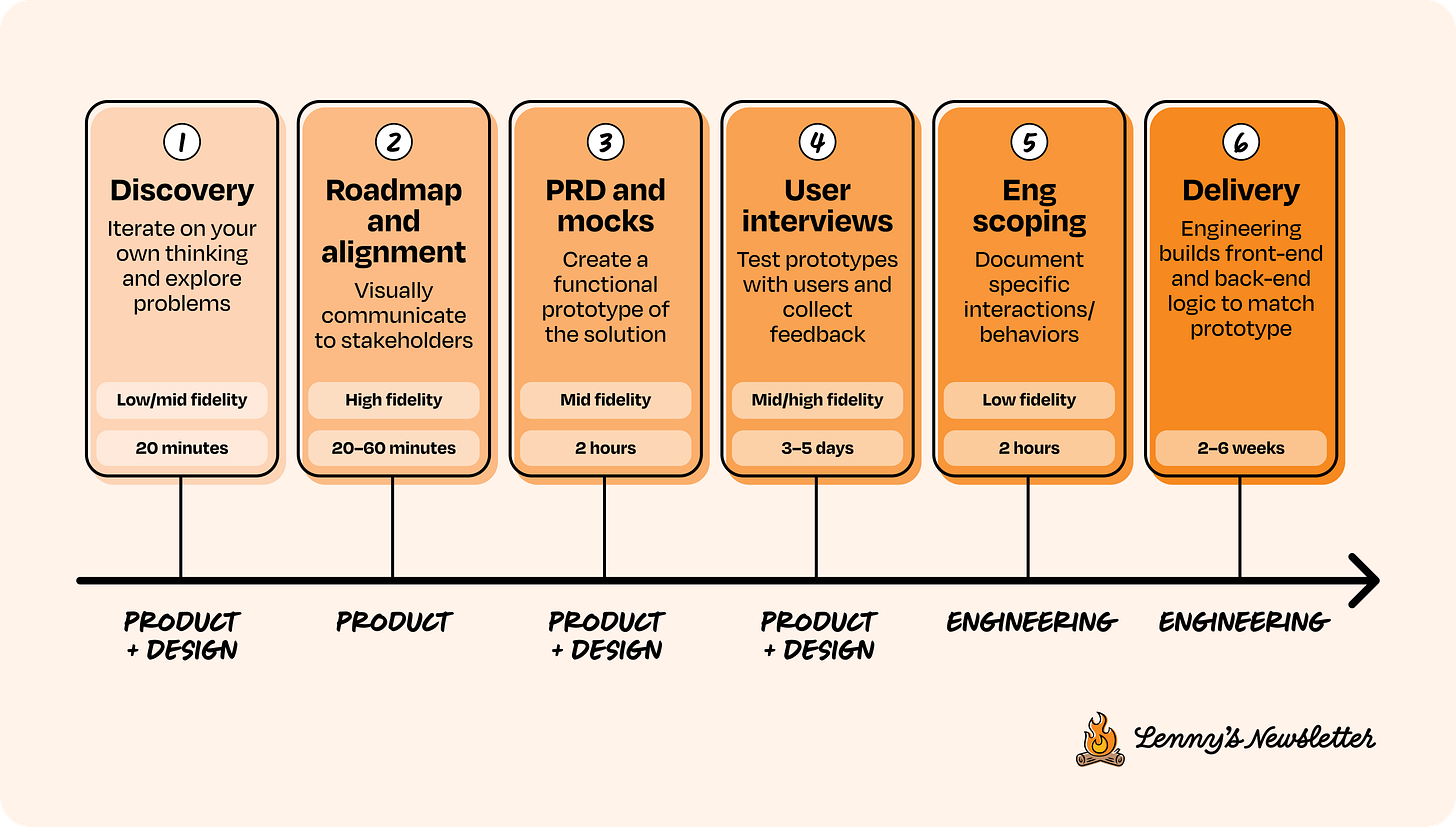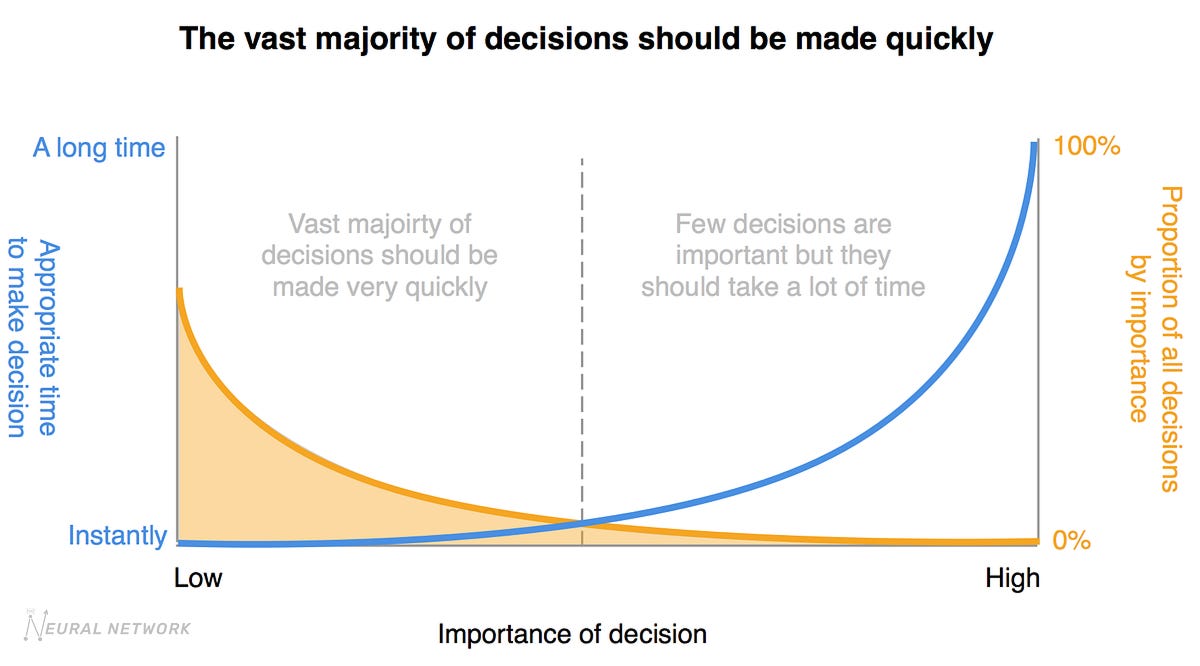Speed Is No Longer a Technical Problem
Why Product Management Is Now the Bottleneck in AI Startups
Just a few years ago, startups lived and died by their ability to ship. Engineering was expensive, slow, and tangled in infrastructure hurdles. Building anything with AI meant wrestling with fragile APIs, rigid architectures, and endless integration work.
That world is quickly fading.
AI-assisted tools have made prototyping nearly effortless. Code can now be generated, tested, and discarded in hours. Teams routinely rebuild from scratch—not because something broke, but because starting over is often faster than maintaining technical debt. Prototypes that once took weeks now take a day.
And yet, despite all this acceleration, building still feels hard.
The bottleneck is no longer engineering. It’s clarity. As code becomes easier to write, the real constraint has shifted upstream—toward product management, decision-making, and judgment.
The Application Layer Is Where Leverage Lives
Most attention in AI still gravitates toward foundation models and custom silicon, but the real leverage is higher up the stack. The application layer is where user experience happens, where value is delivered, and where companies generate revenue. As infrastructure becomes increasingly commoditized, it’s the application layer that distinguishes winners from everyone else.
And building here is getting easier by the week. Developers can now stitch together systems using orchestration tools, agentic frameworks, and modular libraries for retrieval, evaluation, and embeddings. The days of building everything from scratch are mostly gone. The stack is more composable and forgiving than ever.
But ease comes with risk. When it’s easy to build anything, it becomes equally easy to build the wrong thing—and to waste time and resources doing it at scale. This is where judgment, product thinking, and feedback loops become vital.
Engineering Isn’t Slowing You Down
The traditional barriers to building have eroded. Thanks to AI-enhanced tooling, production-grade code is now 30 to 50 percent faster to write. For early-stage prototypes, teams can move ten times faster—or more.
Because these prototypes are often built outside of legacy systems, they’re light, disposable, and fast to iterate. What used to be multi-week architectural planning exercises can now be rebuilt from scratch in a few days. Decisions that once felt like one-way doors—hard to reverse, expensive to revisit—now feel more like pivots.
This isn’t just about speed. It’s about freedom. Engineering no longer dictates the pace of innovation. That responsibility has moved elsewhere.
Product Management Hasn’t Caught Up
While engineering has become dramatically more efficient, product management hasn’t kept pace. In some cases, the old ratios are reversing—teams are experimenting with more product managers per engineer, not fewer. It’s a sign of where the bottleneck has moved.
Why the imbalance? Because product decisions still take time. The ability to generate features now exceeds the team’s ability to frame, scope, and prioritize them. When ideas are vague, abstract, or loosely defined, engineers stall—not because they lack capability, but because they’re waiting for clear direction.
Modern product velocity isn’t about shipping faster documentation. It’s about shaping clear, testable hypotheses that guide the team toward fast feedback and meaningful iteration. It’s not about doing more—it’s about knowing what not to do.
Speed Comes from Specificity
At the heart of product momentum is specificity. The difference between an idea that ships and one that stalls is how clearly it’s defined.
“AI for healthcare” might sound visionary in a meeting, but it’s not actionable. In contrast, “a booking assistant that optimizes MRI scheduling to reduce patient wait times” is something an engineer can build today. One is a pitch. The other is a product.
Vague ideas generate enthusiasm, but rarely lead to output. Specific ideas create movement. And movement—not just inspiration—is what drives real learning and traction.
Judgment Is the New Differentiator
Despite our collective obsession with data, early-stage product decisions are rarely made with clean dashboards and tidy metrics. More often, they rely on fast, confident judgment.
Judgment isn’t guesswork. It’s the ability to recognize patterns, weigh tradeoffs, and move forward with limited information. And it’s earned through immersion, repetition, and user contact—not spreadsheets.
In a world where code is cheap and prototypes are fast, the bottleneck isn’t execution. It’s knowing what to execute. Teams that excel here rely on domain intuition, sharpened through firsthand experience and tempered by feedback—not just statistical significance.
Feedback Loops Are the Real Build System
Teams that move fast don’t just write code quickly—they learn quickly. They use feedback loops not only to validate ideas, but to refine their instincts.
Here’s a rough hierarchy of feedback methods, ranked from fastest to slowest:
Trust your gut (if you’ve earned it)
Ask a few close teammates
Talk to strangers in real-world settings (coffee shops, lobbies)
Share with a small group of users
Run A/B tests—but only after everything else
Each method adds fidelity, but also introduces delay. The most valuable output from feedback isn’t always the answer—it’s what the data reveals about how well your team understands the user. A tight feedback loop doesn’t just resolve the current decision—it accelerates the next one.
AI Literacy Still Compounds
Knowing how to build with AI—not just use it—unlocks speed at a deeper level. The ability to choose the right building blocks, prompt strategies, or model integrations can save weeks. The wrong choice can lead your team down dead ends.
That’s why skills like prompt chaining, retrieval-augmented generation, evaluation frameworks, and modular architectures aren’t niche knowledge anymore. They’re foundational. Teams with this technical fluency don’t just move faster—they’re more resilient, more experimental, and better able to adapt.
And when systems are designed for flexibility, switching between models or tools becomes trivial. Momentum stays intact. Experiments stay cheap. Dead ends stay shallow.
Ethics Is a Product Question Too
Responsible development is no longer just the domain of legal or compliance teams. It’s a core product question.
The most important filter for any new idea isn’t just “Will it make money?” It’s “Should this exist?”
Plenty of ideas are viable. Far fewer are worthwhile. The best teams apply the same product rigor to ethical implications as they do to UX or market fit. They build for outcomes, not just output. And those are the teams that build software people trust.
Your Bottleneck Isn’t Technical
The infrastructure is in place. The tools are fast. The models improve weekly. If your team feels stuck, it’s not because of engineering—it’s because the product function hasn’t caught up.
Shipping isn’t the hard part anymore. Knowing what to ship, why it matters, and how to test it within days—that’s the new frontier.
If you’re still treating product management as a planning layer instead of a velocity engine, you're already behind. The constraint has shifted. The faster you adapt, the faster your team can move.






